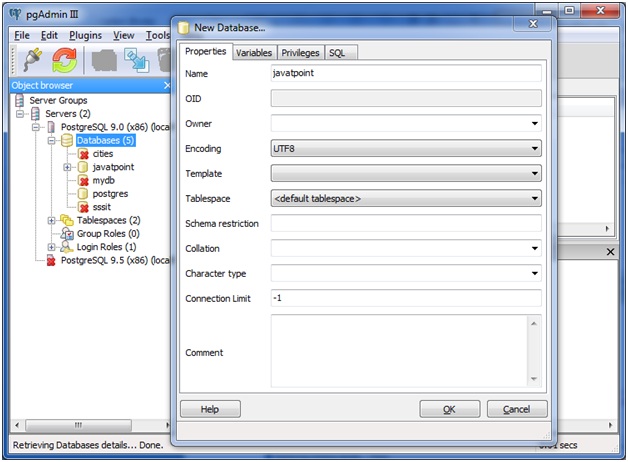
If you attempt to perform some actions in this session, you will see that you don’t have the ability to do many things. This is the default database set up during the installation. In this example, you use the database postgres.
#Postgresql create user password
You will need to enter a password after this command. sudo psql -U test_user -d postgres -h 127.0.0.1 -W.To log in with your test_user, issue the following command: The -W flag tells PostgreSQL that you will be entering a password.

The -h 127.0.0.1 section is the part that specifies that you will be connecting to the local machine, but through a network interface, which allows you to authenticate even though your system username does not match.The database_name should be the name of an existing database that you have access to.

The user_name should be replaced with the username you want to connect with.Here’s a brief breakdown of each item in the command: psql -U user_name -d database_name -h 127.0.0.1 -W.To explicitly specify the options you want to use, use the following syntax with your parameters: PostgreSQL assumes that when you log in, you will be using a username that matches your operating system username, and that you will be connecting to a database with the same name. Now, exit the PostgreSQL interface and exit back to your normal user with this command: You will be prompted to enter and confirm a password. You can try this with the test_user you created earlier by giving it a password: This changes the connection type to remote even though it is actually a local connection.įirst, create a password for the user you want to connect with, so that it can authenticate. You can alter this by either changing the login type, or by specifying that PostgreSQL should use the loopback network interface. Logging In as a Different User in PostgreSQLīy default, users are only allowed to login locally if the system username matches the PostgreSQL username. To change it back to a role with login access, use the following command: Postgres | Superuser, Create role, Create DB, Replication, Bypass RLS | To list the roles in your Postgres instance, type the following command: You can now access the PostgreSQL prompt immediately by typing: Then, you can switch to the postgres account by typing: In order to use Postgres, you can log into that account.įirst, make sure your server is running by using the systemctl start command: The installation procedure created a user account called postgres that is associated with the default Postgres role. If a role exists within Postgres, a Unix/Linux username with the same name is able to sign in as that role. Upon installation, Postgres is set up to use peer authentication, meaning that it associates Postgres roles with a matching Unix/Linux system account. Roles can be manipulated to resemble both of these conventions, but they are also more flexible. Roles are different from traditional Unix-style permissions in that there is no distinction between users and groups. Postgres manages permissions through the concept of roles. Viewing Roles and Permissions in PostgreSQL With your environment prepared and Postgres running on your server, you can begin learning about how Postgres handles permissions.

#Postgresql create user how to
To complete Step 1 of our How To Install and Use PostgreSQL on Ubuntu 22.04 tutorial to have Postgres installed on your server. After completing this prerequisite tutorial, your server should have a non-root user with sudo permissions and a basic firewall. One Ubuntu 22.04 server that has been configured by following our Initial Server Setup for Ubuntu 22.04 guide. To follow along with this tutorial, you will need: This will allow you to provide your applications the privileges necessary without affecting separate databases. This guide will demonstrate how to properly manage privileges and grant user permissions. PostgreSQL is a powerful tool that can be used to manage application and web data on a Virtual Private Server. Users can define, manipulate, control, and query data using Structured Query Language, more commonly known as SQL. As with other relational databases, PostgreSQL stores data in tables made up of rows and columns. I've also added an extra statement to change the default schema for the user via the search_path parameter.PostgreSQL, or Postgres, is an open-source relational database management system. This is an example of creating a PostgreSQL user and assigning the SELECT, INSERT,UPDATE,DELETE permissions. Question: How can I create a PostgreSQL user for CRUD operations in a specific database?Īnswer: The CRUD operations need to cover CREATE, READ ,UPDATE and DELETE.


 0 kommentar(er)
0 kommentar(er)
